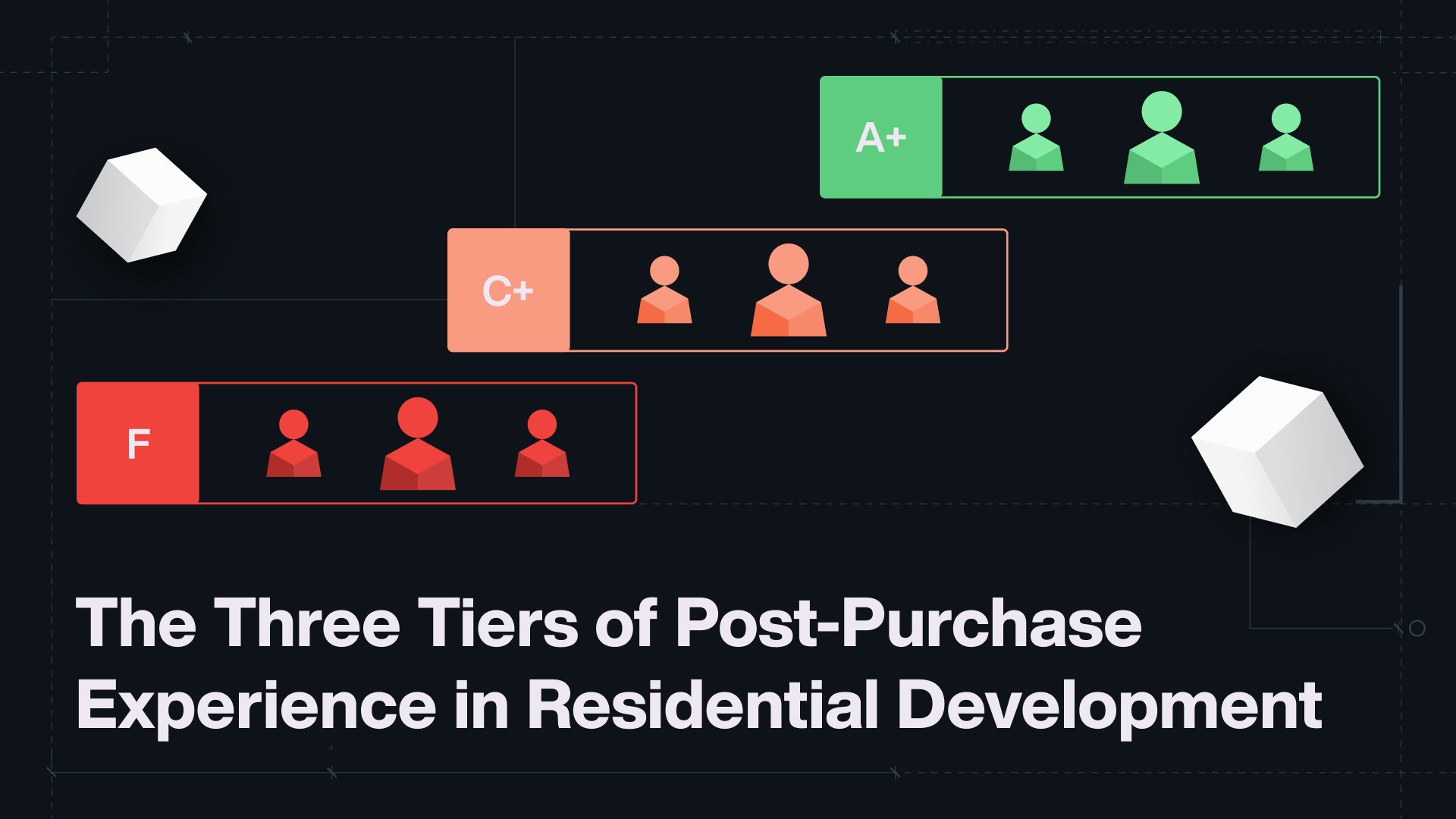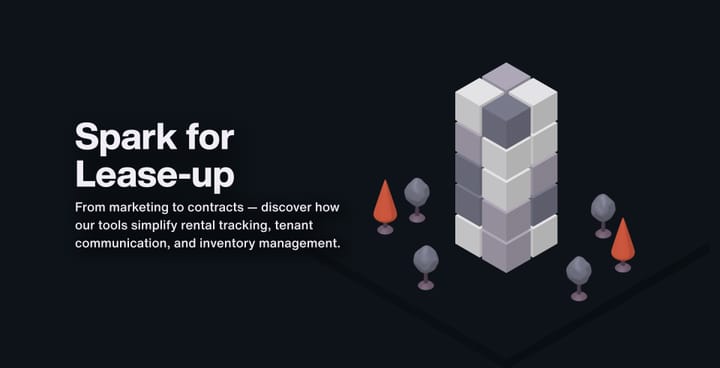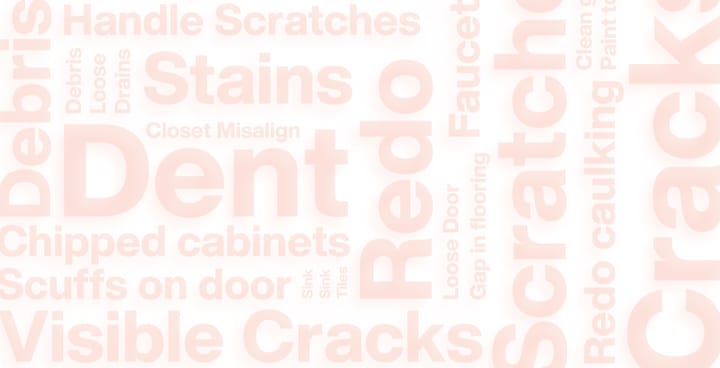The Three Tiers of Post-Purchase Experience in Residential Development

Nobody likes to wait, whether it’s for a dinner reservation, a package delivery, or the keys to a new home. When buying a presale condo or townhome, the waiting is not only tedious; it can be filled with anticipation and anxiety, as buyers find themselves stuck between completion and occupancy in a period that can stretch for years.
Many residential developers pour their resources—time, attention, and budget—into the pre-sale phase, focusing on optimizing the marketing and sales experience. But once the money has changed hands, the post-purchase experience is often overlooked. This oversight is a major missed opportunity to build trust, generate excitement, and create lasting brand loyalty that can lead to future referrals.
At Juniper, we’ve supported hundreds of residential projects and seen firsthand how good and bad homeowner care programs shape the overall outcome for both developers and their customers. Today, we’ll break down the three tiers of post-purchase experience, exploring what defines each and how developers can use this period to enhance their project's success.
Tier One: Left In The Dark (F)
In the worst-case scenario, the post-purchase experience is an afterthought, managed reactively rather than proactively. Developers who fall into this trap have often invested heavily in marketing and sales but haven't planned for the long period between completion and occupancy. With sales teams moving on to their next project, there’s often no clear understanding as to who is the main point of communications with the homebuyer. It’s not an uncommon occurrence where a homebuyer reaches out to the sales person that guided them through the purchase journey, only to receive an automated email that the sales person has left the company. As a result, homeowners feel left in the dark.
Communication is infrequent, generic and often transactional. The only time a homeowner hears from the developer is to deliver bad news, like construction delays, or to request more money in the form of deposits. This approach turns an exciting, life-changing purchase into a series of negative interactions. Research shows that uncertain and unexplained waits feel longer than equally long waits with communicated timelines. Because the wait is so long and the financial commitment so high, any negative feelings are magnified. The homeowner is left with little more than a sales contract, a floor plan and a few generic renderings, with no tangible connection to the home they’ve purchased. When friends or family ask about the new condo, the buyer doesn’t have a clear or positive update to share. This lack of information and engagement creates a feeling of powerlessness and can lead to frustrated buyers, reputational damage, and, in the worst cases, legal or regulatory headaches. Ultimately, this isn't how you want your homebuyers to feel.
Tier Two: Meeting Basic Expectations (C+)
The "good" post-purchase experience is one that simply covers the basics. Developers in this category are proactive enough to avoid the disasters of the first tier and provide timely updates on key milestones, ensuring homeowners are kept in the loop. Queries and issues are resolved efficiently, and all project information is documented within a homeowner care platform like Juniper. Homeowner expectations are met, but nothing is done to go above and beyond.
In this scenario, communication is functional and efficient. When friends or family ask a buyer how their new home is coming along, they can confidently say "good" but likely don't have anything exciting or remarkable to share. The experience is not frustrating, but it also doesn’t do anything to deliberately build excitement or brand loyalty.
On paper, this approach checks the right boxes. Buyers aren’t left guessing, and they feel reasonably cared for. Developers may believe this is “good enough,” but in a market where word of mouth and reputation drive future sales, simply meeting expectations can mean leaving long-term brand value on the table.
Tier Three: The Best-in-Class Experience (A+)
The elite post-purchase experience is one where developers behave less like a construction company and more like a luxury service brand, such as the Four Seasons or Apple. This is a customer journey designed and planned from the very outset of the project, with the same level of care and budget as the sales and marketing effort. Developers in this tier understand that the waiting period is a golden opportunity to "surprise and delight" customers, building a deep sense of brand affinity and loyalty.
This experience is built on proactive, frequent, and personalized communication, all centralized in a single, branded hub. Developers can use high-quality graphics and photos created for the sales process and repurpose them to share updates and build excitement. Here are some examples of what this looks like:
- Timeline of Key Milestones: Simply put, the buyer always knows exactly where they are and what is coming next. This can include construction updates and other key pre-occupancy dates.
- Construction Behind The Scenes: Buyers are hungry for the details of what goes into building their new homes. Some developers have a live feed of the construction site for residents to visually check in on progress.
- Communication & Feedback: Providing proactive updates to buyers, opening a single channel for homeowner communications, and creating multiple opportunities to capture feedback from homebuyers such as surveys and ratings.
- Amenity Information: Pre-occupancy is an excellent time to communicate important amenity usage policies and to help cultivate excitement in your thoughtfully curated amenity package.
- Collateral Hub: All of your beautifully designed renderings, pamphlets, lifestyle videos and neighborhood guides should live within a central repository like Juniper for homeowners to access.
- Custom Branding: All of the intention and effort that you have invested into your project’s dedicated colours, fonts and logo can be used to personalize your homeowner care portal.
Even when timelines shift—a reality of construction—the goodwill banked through consistent, positive interactions cushions the blow. Think of it like a savings account: you can't make a withdrawal from an account with a zero balance. But if you’ve been making steady deposits of goodwill, buyers are far more forgiving and understanding when setbacks occur.
The result is a homeowner who is not just satisfied but a proud brand advocate. When asked about their new home, they don't have to be prompted; they actively share their excitement and the cool updates they're receiving with friends and family. This word-of-mouth marketing is invaluable, as a proud customer becomes a powerful, authentic voice for the brand.
By implementing these strategies, the developer turns a long, stressful wait into a seamless, engaging journey that transforms a simple transaction into a lasting relationship. The waiting experience can become something customers actually enjoy and a compounding layer to your service offering.
What kind of post-purchase experience are you creating?



